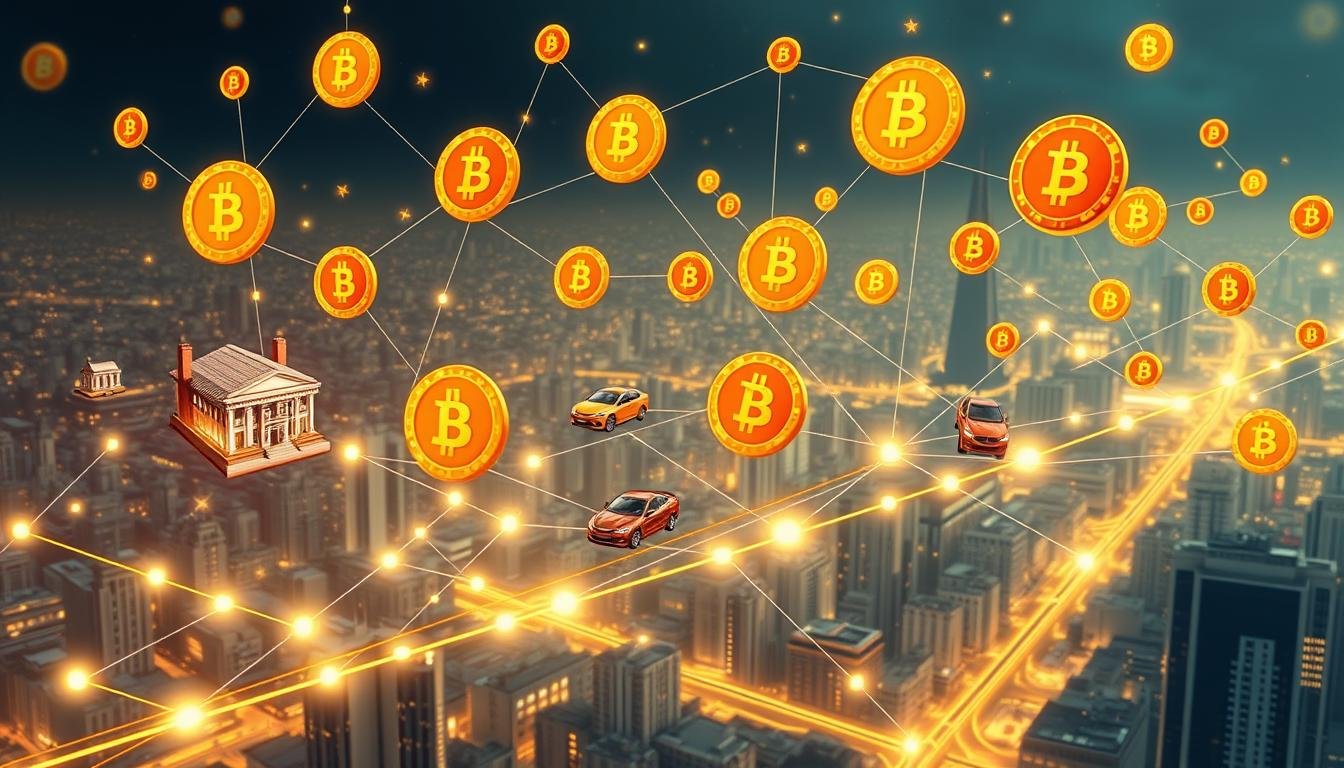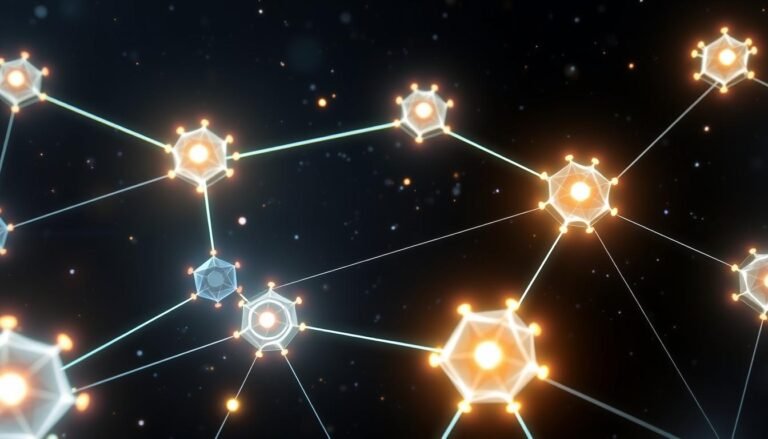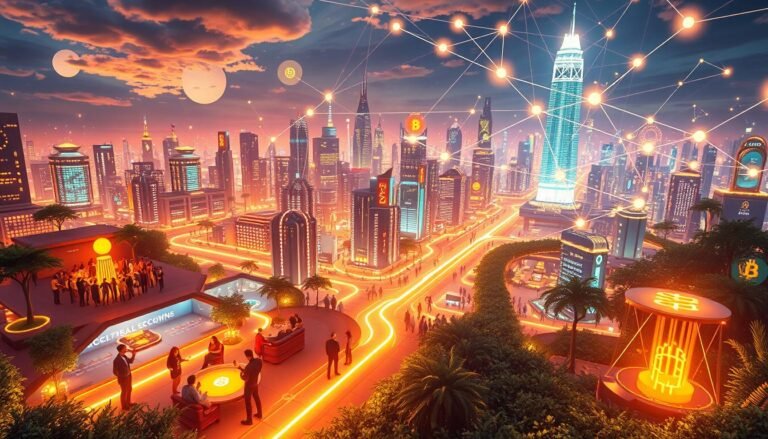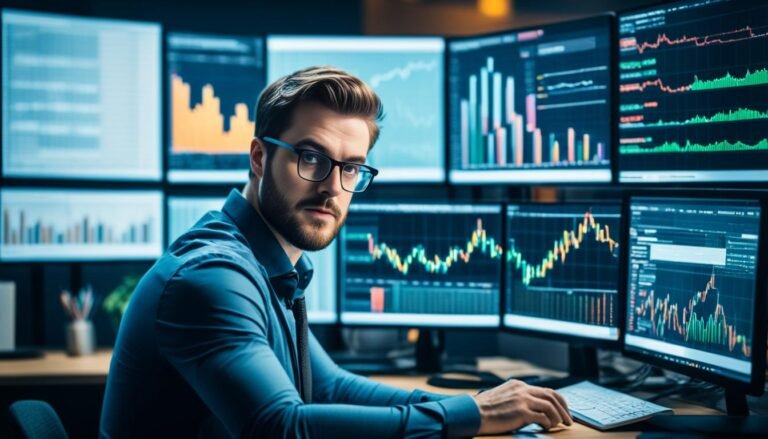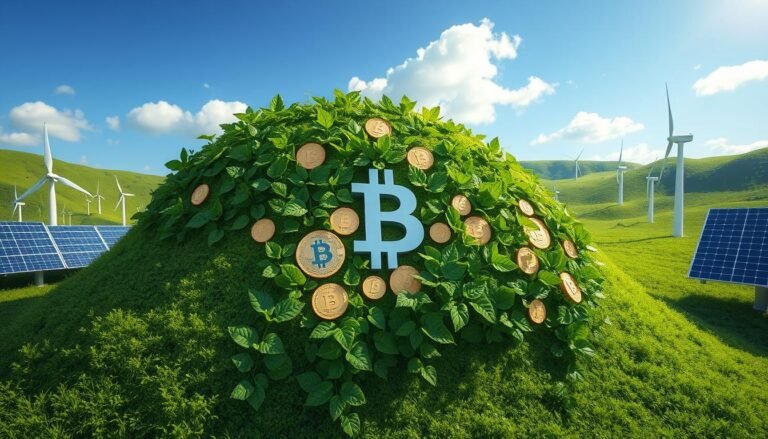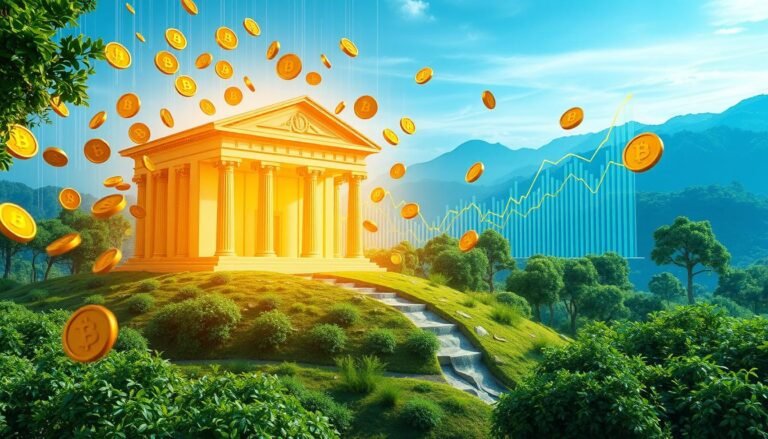Tokenization of Real-World Assets (RWA)
The blockchain world is seeing a big chance in tokenizing real-world assets (RWAs). This market could be worth hundreds of trillions of dollars. More projects are turning different assets into tokens, like cash, commodities, and real estate.
This change is big for how we deal with these assets. It opens up new chances for blockchain in finance and other areas. It’s all thanks to blockchain’s power and how it works.
Tokenizing real-world assets is a big change. It lets us manage and trade these assets in new ways. Blockchain makes it possible to find new chances in finance and other fields.
As more assets get tokenized, the market is growing. By December 2023, it was worth about ~$5 billion. This shows how big of a deal this new industry is for changing finance and bringing new ideas.
Key Takeaways
- Tokenized RWAs represent a significant market opportunity in the blockchain industry, with a potential market size in the hundreds of trillions of dollars.
- Tokenized RWAs are a growing segment of the DeFi ecosystem, with an estimated total value locked of ~$5 billion in December 2023.
- Tokenization of RWAs unlocks enhanced liquidity, increased access, transparent on-chain management, and reduced transactional friction compared to traditional assets.
- Chainlink’s comprehensive solutions, including Proof of Reserve, Identity, Data Streams and Data Feeds, and Functions, are enabling the secure and scalable integration of tokenized RWAs across multiple blockchains.
- The journey ahead for RWA tokenization holds vast promise, dependent on overcoming regulatory, authenticity, and financial engineering challenges through proper infrastructure planning and innovative solutions.
Understanding Real-World Asset Tokenization
Tokenized real-world assets (RWAs) are digital tokens on blockchain. They represent ownership of physical and financial assets like cash, commodities, and art. This process turns these assets into digital tokens for easier management and trading.
What Are Real-World Assets (RWAs)?
Real-world assets are tangible or financial items with real value. They include real estate, metals, art, and intellectual property. These assets are different from digital or virtual ones.
Benefits of Tokenizing Real-World Assets
- Increased Liquidity: Tokenization makes real-world assets more liquid. It allows more investors to access them, breaking down barriers.
- Transparent Management: Blockchain-based tokenization offers clear records of ownership and transactions. This builds trust and accountability.
- Reduced Transactional Friction: It simplifies buying, selling, and transferring assets. This reduces costs and time compared to traditional methods.
- Fractional Ownership: Tokenization lets investors own parts of high-value assets. This opens up opportunities for smaller investors.
Tokenizing real-world assets connects traditional finance with DeFi. It brings new investment chances and makes finance more stable and accessible.
| Metric | Projection |
|---|---|
| RWA Market Value | $16 trillion by 2030 |
| RWA Tokenization Market Cap | $10 trillion by 2030 |
The growth of real-world asset tokenization is driven by its benefits. It’s also fueled by blockchain adoption and supportive regulations.
The Process of Tokenizing Real-World Assets
Tokenizing real-world assets is a detailed process. It ensures the assets are transparent, authentic, and work well with blockchain technology. The first step is asset selection. Here, the asset owner or the tokenization platform picks the right real-world asset for tokenization.
These assets can be anything from real estate and artwork to intellectual property and commodity-backed instruments.
After picking the asset, the next step is to determine the token specifications. This means defining the token’s details, like its supply, divisibility, and any rights or privileges it has. The process also looks at regulatory compliance. It makes sure the tokens follow the law and are structured correctly.
The next step is blockchain selection. Picking the right blockchain is key. It affects the token’s technical abilities, security, and how well it works with other systems. Ethereum, Polygon, and Tezos are popular choices for real-world asset tokenization because of their strong ecosystems and support for developers.
- Asset Selection for Tokenization
- Determining Token Specifications
- Blockchain Selection for Tokenization
- Establishing the Offchain Connection
- Issuing the Tokenized Assets
The offchain connection is vital. It keeps the tokenized asset linked to its real-world counterpart. This is done using secure oracles like Chainlink. They provide accurate offchain data to the blockchain, ensuring the asset’s transparency and authenticity.
Finally, the tokenized assets are issued on the chosen blockchain. This makes them ready for trading, lending, or other financial activities. This step might involve minting tokens, setting up smart contracts, and connecting with necessary infrastructure or marketplaces.
“The tokenization of real-world assets is a transformative process that unlocks new investment opportunities and enhances liquidity across a wide range of industries.”
Tokenization of Real-World Assets (RWA) in DeFi
The use of tokenized real-world assets (RWAs) in decentralized finance (DeFi) is changing the financial world. It brings many assets, not yet on blockchain, into the DeFi space. This makes finance more fair and open to everyone.
Enhancing Liquidity and Accessibility
Tokenizing RWAs boosts liquidity and access in DeFi. It breaks down big, hard-to-sell assets into smaller parts. This lets more people invest in things they couldn’t before.
This leads to more trading, better prices, and smoother DeFi Liquidity for Tokenized Assets.
Enabling Novel Financial Products
Tokenized RWAs help create new financial products in DeFi. For example, they can back stablecoins, making a new way to create assets. This Blockchain-Enabled Asset Utilization grows the DeFi world.
As Tokenized RWAs in DeFi grow, a fairer and more open finance system becomes real. It combines old and new assets, opening new doors for investors and the financial world.
“The tokenization of real-world assets is a game-changer for the DeFi space, unlocking new avenues for investment, liquidity, and innovation.”
Challenges and Risks of RWA Tokenization
Tokenizing real-world assets (RWAs) has its upsides, but it also comes with big challenges and risks. Regulatory Compliance for Tokenized Assets is a major worry. Turning assets like buildings or gold into tokens could mean they’re seen as securities, leading to strict rules.
Ensuring Authenticity of Tokenized RWAs is another big hurdle. People are often unsure if a token really represents the asset it claims to. It’s vital to show clear proof of asset ownership to gain trust.
Also, Transparency in Tokenized Asset Management is key to addressing concerns. It’s important to have strong governance and accountability to keep the tokenization process safe and sound.
Regulatory Compliance and Legal Considerations
Regulatory obstacles are a big challenge for tokenizing real assets. Tokenized assets might fall under securities laws, which can be complex. Navigating these laws is tough, as the rules for tokenized assets are still being shaped.
Ensuring Asset Authenticity and Transparency
Tokenized RWAs need solid ways to prove the assets they represent are real and transparent. Investors want to be sure the tokens are backed by the assets they claim. Managing and valuing these unique assets can also be tricky.
Even with these hurdles, tokenizing real-world assets is still promising. With the right steps to manage risks and follow the rules, it can open up new funding sources, help diversify risks, and spark innovation in finance.
Conclusion
The future of tokenized real-world assets (RWAs) looks bright, despite the hurdles ahead. As RWA tokenization grows, better technology and infrastructure are key. They will open up new investment chances, make things clearer, and let more people get involved.
But, we must tackle big challenges like following rules, proving assets are real, and dealing with transactions across borders. It will take everyone working together. Still, the benefits of RWA tokenization, like easier money flow, shared ownership, and simpler financial steps, are worth the hard work.
With strong stablecoin gateways, better access to RWAs globally, and clear infrastructure, the future is exciting. This technology can lead to more investment options, transparency, and a safer, more welcoming financial world for everyone.
Source Links
- Real-World Assets (RWAs) Explained | Chainlink
- What Crypto Investors Need To Know About Tokenizing Real World Assets
- Understanding Real-World Asset (RWA) Tokenization
- Real World Asset Tokenization 101: Transforming Real-World Assets into Digital Tokens
- A Complete Guide on RWA (Real-World Assets) Tokenization
- Tokenizing Real-World Assets: Explained – Landvault Blog
- The Rise of Real-World Assets (RWAs) in DeFi: Key Players and Opportunities
- Tokenizing Everything: Real World Assets (RWA) in Crypto
- Tokenization of real World assets (RWA) and the risks that need to be addressed
- Tokenization of Real-World Assets: Challenges and Opportunities – Blog
- Real World Asset Tokenization: A New Paradigm for Investment
- Revolutionizing Asset Management: ComPilot’s RWA Tokenization Compliance Solutions
- How Tokenized Real World Assets Are Outperforming Crypto
